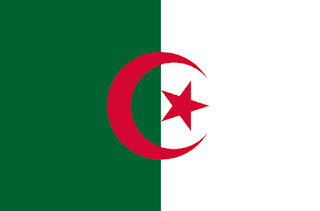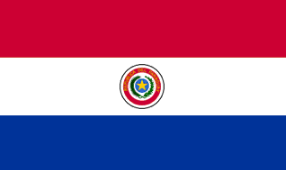FACTS ABOUT TOGO
AMAZING
FACTS ABOUT TOGO
1.
The official name of Togo is the “Togolese
Republic”.
2.
Lome is the capital city of Togo.
3.
The total population of Togo is 7,965,055.
4.
The natives of Togo are called Togolese.
5.
The CFA franc (XOF) is official currency
of Togo.
6.
Togo shares a border with Ghana, Benin
and Burkina Faso.
7.
Togo and its surrounding regions were
known as “the slave coast” between the 16th and the 18th century because
Europeans would come to the region in search of slaves.
8.
Togo has a rich history of religion.
Almost half of the Togolese population are Christian, many of them being
protestants, independent or other Christian communities.
9.
Togo has secular celebrations. Some of
the celebrations include: 1 January – Fete National and 27 April – Independence
Day. These celebrations open a window for job opportunities and they attract
more tourists.
10.
Traditional healing methods are widely
used in Togo. Each center has an herbalist. Medical treatments usually involve
frequent visits to the house of Vodou and the local Fetish priest. However, the
traditional treatment is not much effective.
11.
Public show of affection is minimal in
Togo. Only men and boys are allowed to walk holding hands. Coupling is
discretely secret and it is not steered by parents. It is only in some ethnic
groups like the Tchama that parents make arrangements for courting.
12.
Togolese usually have two to three meals
a day and they are very hospitable. Each meal consists of a large portion of
starch such as maize, cassava and rice. Proteins served with day meals usually
include; goat meat, fish, and beans.
13.
Food is not served in ceremonial
functions except when carrying out animist rituals when animals are sacrificed,
cooked and served. However, beer and gin are essential. The French three or
four meal course is served to the wealthy middle class Togolese during
functions.
14.
The society in Togo was divided
according to traditional and non-traditional lines. The kings, Vodou priests,
and paramount chiefs are the elite. The educated, business professionals and
government officials entail modern elite.
15.
Children remain at home till they reach
five years of age. Kids go to school for formal education once they cross this
age limit.
16.
Togo’s population is challenged with
parasitic, venereal, intestinal and respiratory health problems.
17.
Togo means ‘house of sea’ in the Ewe
language.
18.
Togo had a great railway network during
the reign of the German. During the outbreak of First World War in 1914, Togo
was drawn into a conflict. It was invaded by the British and French armies
during the Togo-land campaign. In 1916, the territory was divided into French
and British zones and this was made formal in 1922.
19.
Togo became independent on 27 April
1960. In a smooth transition, Togo served its constitutional ties with France.
It shed its UN trusteeship and became fully independent with Olympio as the
president.
20.
Olympio’s government was overthrown and
he was assassinated in a coup on 13 January 1963. The coup was led by army’s
non-commissioned officers who were dissatisfied with the conditions following
their discharge from the French army.
21.
Grunitzky was the first prime minister
of Togo. Two days after Olympio was assassinated, Grunitzky came back to Togo
to head the government as prime minister.
22.
Gnassingbe Eyadema was the
longest-serving president of Togo and died in 2005. He served for thirty-eight
years, after being the longest dictator to hold occupation in Africa.
23.
The Ewe who migrated from Nigeria in the
fourteenth century forms the major ethnic group in Togo.
24.
Togo was put on the World stage by the
national soccer team which reached the FIFA World Cup in 2006.
25.
The Portuguese arrived in Togo in the
15th century but did not settle.
26.
Slavery was abolished in Togo in the
nineteenth century.
27.
Cocoa, coffee, and cotton generate 40%
of Togo’s exports.
28.
Cotton is the most important cash crop.
29.
The government contributes in
accountability of taxes collected by spending 25.5 percent of gross domestic
output in development.
30.
Bargain, bargain, and bargain. Togolese
business people inflate prices so as to make handsome profits. So if you are in
the country, always bargain for the price and see for yourself how low you can
buy the item for.
31.
Togo has many limestone mines which have
created employment opportunities. The mine have increased Togo’s contribution
to Africa export market.
32.
The constitution of Togo has well
stipulated laws on the protection of real private property and inheritance.
33.
Togo is a member of West African
economic and monetary union. The foreign and domestic investors are treated
equally.
34.
Togo’s safe territorial waters have
become good zones for international shippers amid regional surge in maritime
piracy.
35.
Togo is one of the world’s largest
producers of phosphate, with coffee, cocoa and cotton accounting for 40 percent
of export earnings.
36.
In the year 2014, the federal government
of Togo reduced fees payedhere is high infant mortality. 125 children out of
1,000 die before they reach five years, owing to lack of resources such as
water, road infrastructure, medical facilities and good education on nutrition
to parents.
37.
Togolese health care system is poor due
to lack of resources to put up modern health facilities and high population
growth rate.
38.
Togo has a low percentage of educated
adults, the highest number being women who cannot read and write.
39.
Little funds allocated to youth
development projects has led to the increase in poverty hence more crimes.
40.
The Togo government only provides 24.7
percent of the money required for education.
41.
Education in Togo is of low quality.
This has led to graduates who are not fully baked to run the current dynamic
world.
42.
Togo is ranked forty-fourth position out
of the fifty most underdeveloped countries in the world. This reflects low per
capita income of the general population of Togo.
43.
Togo ranks 152nd on
2009 United Nations Human Development Index.
44.
Human trafficking is widespread in Togo.
Children, especially girls are sold to forms of exploitative arrangements,
which amount to slavery.
45.
The Mont Agou at 986 m above sea level
is the highest mountain in Togo.
46.
The Mono River with a length of 400 km,
running from north to south, is the longest river in the country.
47.
Togo is a long, thin country in West Africa.
48.
Considering its area, Togo is twice the
size of Maryland.
49.
Togo has 3 National Parks, 10
faunal reserves, and 84 forest reserves. By businesses to register with
tax authorities and implemented electronic customs system to simplify importing
and exporting process.
50.
Togo spent 5.2% of its GDP
on health care in 2014 and $76 per capita.
51.
Togo Exports:
cotton, phosphates, coffee and cocoa.
52.
Togo Imports:
machinery and equipment, foodstuffs and petroleum products.




Comments
Post a Comment